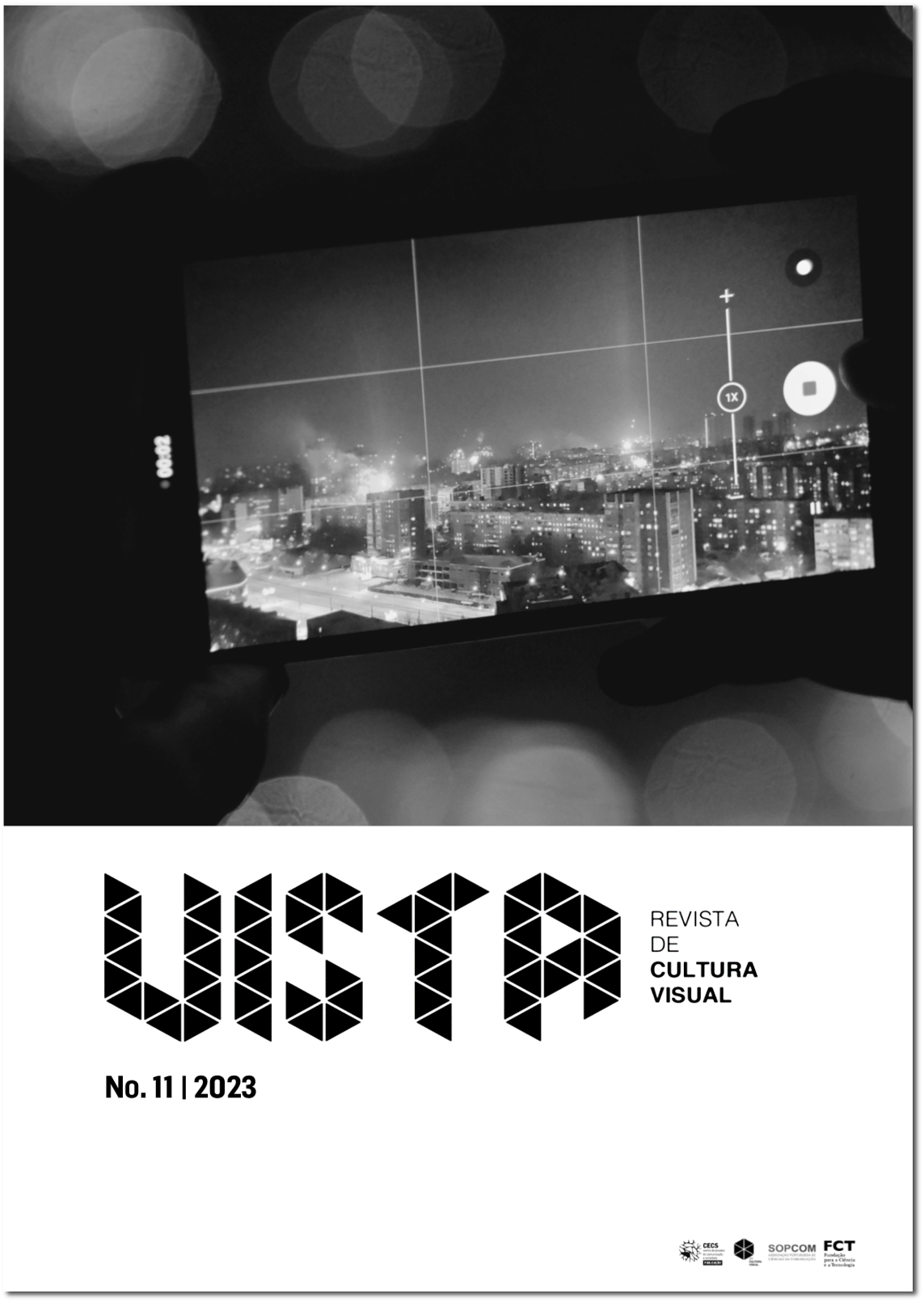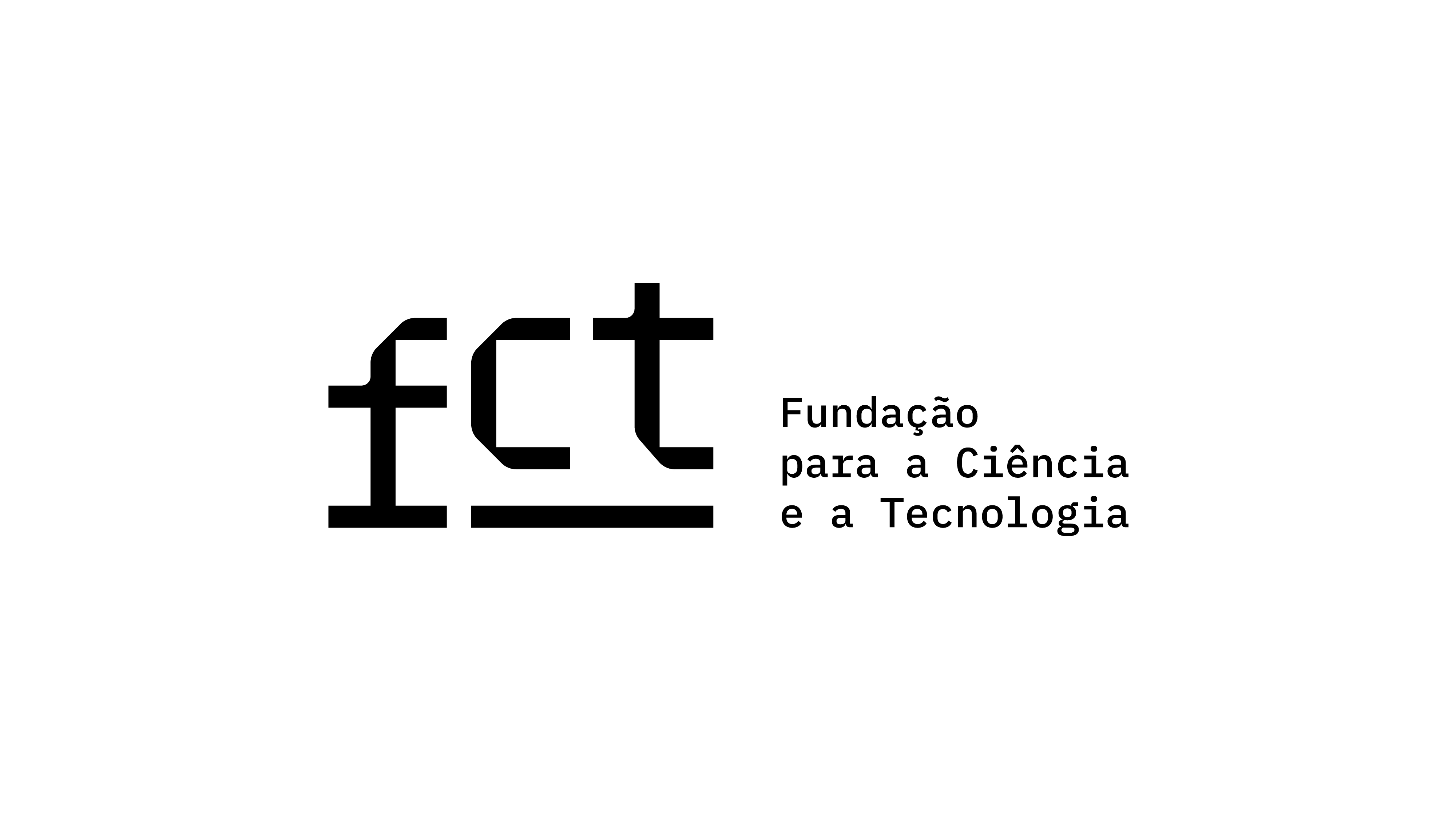The Laws of Attention-Capturing. Reflections on the Role of Video in Digital Platforms
DOI:
https://doi.org/10.21814/vista.4512Keywords:
video, laws, attention capture, digital platformsAbstract
Image is one of the dominant media in contemporary communication (Martins, 2021, p. 185). The current cultural convergence is mostly about digital images (Jenkins, 2006/2009). Based on this premise, video is one of the most prominent types in the era of image and screens (Costa, 2012; Loureiro, 2011; Martins, 2011).
Different digital communication companies, based on different platforms, use different architectures and algorithms, with different techniques and methods, to use the image to communicate and capture attention. Digital media is planned with images as a central element to communicate and algorithmic laws to retain and build loyalty among citizens (Lanier, 2010/2010, 2018/2018).
Theorists of the economy of attention argue that the companies managing the major digital platforms have one main objective: to capture the attention of the masses to create loyalty and retention of consumers/users (Martens, 2016; Srnicek, 2017). The economy of attention is one of their main sectors of activity, with screen vision as one of its core businesses (Costa, 2014). The individuals' payoff to the companies that manage the digital platforms is made through constantly giving views (Costa, 2020b), persistent telepresence, a frenetic sharing of content, and the current use of the numerous services and digital ecosystems. The sum of many watching, tele-being, tele-sharing and tele-using allows for dynamising the attention economy.
The big digital companies are fighting for the biggest cuts in this economy. Those with the highest user loyalty and retention are profiting the most. The key strategy lies in the methods and techniques used to capture attention. This strategy creates "laws", that is, regularities and patterns that flow between different companies and different sociotechnical dynamics. The video, as a method and technique of attention-capturing, uses its "laws" and tracks, thus contributing to other social processes of use, influence, manipulation, imitation, propagation, socialisation and individuation. In this article, we seek to account for some general regularities and patterns used in the video to capture the attention of the masses.
Downloads
References
ALL GAMES. (2022, 30 de novembro). 🔥Unreal Scenes!! Cristiano Ronaldo Trying to Claim Bruno Goal after Game🇵🇹😅|#cr7#cr7header#goal [Vídeo]. YouTube. https://www.youtube.com/watch?v=oG-OTyt0YRc
Anderson, C. T. (2013). Athazagoraphobia, the fear of forgetting. The Midwest Quarterly, 54(4), 334–388.
Costa, P. R. (2012). A ecranovisão do terror no século XXI. Comunicando, 1(1), pp. 159–167. https://hdl.handle.net/1822/37441
Costa, P. R. (2014). Da cultura do ecrã na visão: Alguns resultados de uma abordagem epistémica desobediente. Revista Comunicando, 3, 178–202. https://doi.org/10.58050/comunicando.v3i1.173
Costa, P. R. (2020a). Uma cartografia do ódio no Facebook: Gatilhos, insultos e imitações. Comunicação Pública, 15(29), 1–28. https://doi.org/10.4000/cp.11367 DOI: https://doi.org/10.4000/cp.11367
Costa, P. R. (2020b). Impactos da captologia. Problemáticas, desafios e algumas consequências do “dar vistas” ao ecrã em rede. Sociologia Online, 23(1), 74–94. https://doi.org/10.30553/sociologiaonline.2020.23.4 DOI: https://doi.org/10.30553/sociologiaonline.2020.23.4
Costa, P. R. (2020c). A presença de arquétipos nos youtubers: Modos e estratégias de influência. Galáxia, 45, 5–19. https://doi.org/10.1590/1982-25532020347613 DOI: https://doi.org/10.1590/1982-25532020347613
Costa, P. R. (2021a). Da ferramenta ao intelecto algorítmico: Sobreviver entre dilemas digitais. Journal of Digital Media & Interaction, 4(10), 21–37. https://doi.org/10.34624/jdmi.v4i10.24568
Costa, P. R. (2021b). O ethos wikipedista como modo de combate à desinformação. Liinc Em Revista, 17(1), e5630. https://doi.org/10.18617/liinc.v17i1.5630 DOI: https://doi.org/10.18617/liinc.v17i1.5630
Costa, P. R. (2021c). A sociedade enquanto duelo de imitações. Uma releitura de Tarde, G. (1978 [1890]). As leis da imitação. Porto: Rés Editora. Revista Ciências Humanas, 14(2), 1–10. https://doi.org/10.32813/2179-1120.2121.v14.n2.a792 DOI: https://doi.org/10.32813/2179-1120.2121.v14.n2.a792
Costa, P. R., & Capoano, E. (2020). O medo do consumo solitário: Comentários nos canais infanto juvenis de YouTube do Brasil e de Portugal. Journal of Iberian Latin-American Research, 26, 407–426. https://doi.org/10.1080/13260219.2020.1909872 DOI: https://doi.org/10.1080/13260219.2020.1909872
Costa, P. R., Capoano, E., & Barredo, D. I. (2022). A captura da atenção. De periferia temática à urgência na investigação, no ensino e na legislação. In P. R. Costa, E. Capoano, & D. Barredo (Eds.), Organizações e movimentos periféricos nas redes digitais ibero-americanas (pp. 15–39). CIESPAL.
Costa, P. R., Perneta, P., & Martins, M. L. (2021). Wikipédia em língua portuguesa. Dinâmicas, estruturas e dilemas na colaboração para o conhecimento. Revista Ciências Humanas, 14(2), 1–16. https://doi.org/10.32813/2179-1120.2121.v14.n2.a747 DOI: https://doi.org/10.32813/2179-1120.2121.v14.n2.a747
Crawford, M. B. (2015). Introduction, attention as a cultural problem. The world beyond your head: On becoming an individual in an age of distraction. Straus and Giroux.
Davenport, T., & Beck, J. (2001). The attention economy: Understanding the new currency of business. Harvard Business School Press.
Deleuze, G. (2000). Diferença e repetição (L. Orlandi & R. Machado, Trads.). Relógio D’Água. (Trabalho original publicado em 1968)
Eisenstein, E., & Estefanon, S. (2011). Geração digital: Riscos das novas tecnologias para crianças e adolescentes. Revista Hospital Universitário Pedro Ernesto, 10(2), 42–53.
Elias, N. (1993). O processo civilizador. Volume 2: Formação do estado e civilização (R. Jungmann, Trad.). Zahar. (Trabalho original publicado em 1939)
GOAL Brasil [@goalbrasil]. Gol do Cristiano Ro... não, é do Bruno Fernandes! 😲⚽️ Recriamos o gol que colocou Portugal nas oitavas no Qatar 🇵🇹☑️ #sportsnews #copadomundo #goalbrasil [Vídeo]. TikTok. https://www.tiktok.com/@goalbrasil/video/7171400325687987461
Grados, C., & Gabriela, L. (2020). El uso de Tik Tok como herramienta para generar content marketing por las marcas dirigidas a jóvenes de 17 a 25 años [Trabalho de investigação, Universidad Peruana de Ciencias Aplicadas]. Repositório Académico UPC. http://hdl.handle.net/10757/653667
Habermas, J. (1992). Teoría de la acción comunicativa, Vol. II. crítica de la razón funcionalista (M. J. Redondo, Trad.). Taurus. (Trabalho original publicado em 1981)
Han, B-C. (2018). A expulsão do outro – Sociedade, perceção e comunicação hoje (M. S. Pereira, Trad.). Relógio D’Água. (Trabalho original publicado em 2018)
Higgins, S. S., & Ribeiro, A. C. (2018). Análise de redes em ciências sociais. ENAP.
Jemielniak, D. (2020). Wikipedia as a role-playing game, or why some academics do not like Wikipedia. Wikipedia @ 20. https://wikipedia20.mitpress.mit.edu/pub/wikipedia-as-rpg
Jenkins, H. (2009). Cultura da convergência (S. Alexandra, Trad.). Aleph. (Trabalho original publicado em 2006)
Jung, C. G. (1969). O eu e o inconsciente (D. F. da Silva, Trad.). Vozes. (Trabalho original publicado em 1928)
Kerckhove, D. (1997). A pele da cultura (L. Soares & C. Carvalho, Trads.). Edições 70. (Trabalho original publicado em 1995)
Lagrange, H. (2020). Les maladies du bonheur. PUF.
Lanier, J. (2010). Gadget: Você não é um aplicativo! (C. Yamagami, Trad.). Saraiva. (Trabalho original publicado em 2010)
Lanier, J. (2018). Dez argumentos para você deletar agora suas redes sociais (B. Casotti, Trad.). Editora Intrínseca. (Trabalho original publicado em 2018)
Latour, B. (2012). Reagregando o social. Uma introdução à teoria do ator-rede. EDUFBA.
Latour, B. (2020). Por que a crítica perdeu a força? De questões de fato a questões de interesse. Cadernos do Departamento de Filosofia da PUC-Rio, 29(46), 173–204. https://doi.org/10.32334/oqnfp.2020n46a748 DOI: https://doi.org/10.32334/oqnfp.2020n46a748
Lipovetsky, G., & Serroy, J. (2010). O ecrã global. Cultura mediática e cinema na era hipermoderna (P. Neves, Trad.). Edições 70. (Trabalho original publicado em 2007)
Lippmann, W. (1997). Public opinion. Free Press Paperbacks.
Loureiro, L. M. (2011). O ecrã da identificação [Tese de doutoramento, Universidade do Minho]. RepositóriUM. https://hdl.handle.net/1822/20462
Luhmann, N. (2009). A opinião pública. In J. P. Esteves (Ed.), Comunicação e sociedade (pp. 163–191). Livros Horizonte.
Martens, B. (2016). An economic policy perspective on online platforms (JRC Technical Report). European Comission. DOI: https://doi.org/10.2139/ssrn.2783656
Martins, M. L. (2011). Crise no castelo da cultura – Das estrelas para os ecrãs. Grácio Editora.
Martins, M. L. (2021). Das palavras e ideias às imagens, sons e emoções. In M. L. Martins (Ed.), Pensar Portugal – A modernidade de um país antigo (pp. 185–192). UMinho Editora. DOI: https://doi.org/10.21814/uminho.ed.61
McLuhan, M. (2007). Os meios de comunicação como extensões do homem (D. Pignatari, Trad.). Cultrix. (Trabalho original publicado em 1964)
Miranda, J. B. A. (2008). Envios. Uma experimentação filosófica na internet. Nova Vega.
Neves, J. P., & Costa, P. R. (2020). Eu sou tu. Uma ecossociologia da individuação. In J. P. Neves, P. R. Costa, P. de V. Mascarenhas, I. T. de Castro, & V. R. Salgado (Eds.), Eu sou tu. Experiências ecocríticas (pp. 25–48). CECS. http://doi.org/10.21814/1822.68550 DOI: https://doi.org/10.21814/1822.68550
Patino, B. (2019). A civilização do peixe-vermelho: Como peixes-vermelhos presos aos ecrãs dos nossos smartphones. Gradiva.
Reagle, J. (2010). “Be Nice”: Wikipedia norms for supportive communication. New Review of Hypermedia and Multimedia, 16(1–2), 161–180. DOI: https://doi.org/10.1080/13614568.2010.498528
Rijshouwer, E. (2019). Organizing democracy: Power concentration and self-organization in the evolution of Wikipedia. Erasmus University Press.
RTP. (2022, 28 de novembro). Bruno Fernandes marca golo frente ao Uruguai [Vídeo]. Facebook. https://fb.watch/hwjfPwgODw/
Simmel, G. (1950). Quantitative aspects of the group. In K. H. Wolff (Ed.), The sociology of Georg Simmel (pp. 87–180). Free Press.
Sousa, V., & Costa, P. R. (2022). The fitting memory. How the COVID-19 pandemic blended past with present? ODEERE, 7(2), 93–113. https://doi.org/10.22481/odeere.v7i2.10763 DOI: https://doi.org/10.22481/odeere.v7i2.10763
Srnicek, N. (2017). Platform capitalism. Polity Press.
swann ritossa [@swannfreestylee]. (2022, 12 de dezembro). Portugal 🇵🇹 World Cup 🏆 the end 😂🇲🇦 #fastfootcrew #football #portugal #morocco #qatar2022 #worldcup [Vídeo]. Instagram. https://www.instagram.com/reel/CmFBUh4rmqa/?utm_source=ig_web_copy_link
Tarde, G. (1978). As leis da imitação (C. F. Maia & M. M. Maia, Trads.). Rés Editora. (Trabalho original publicado em 1890)
Tarde, G. (1992). A opinião e as massas (E. Brandão, Trad.). Martins Fontes. (Trabalho original publicado em 1901)
Tkacz, N. (2015). Wikipedia and the politics of openness. University of Chicago Press. DOI: https://doi.org/10.7208/chicago/9780226192444.001.0001
Zagalo, N. (2012, 27 de outubro). Ávidos por padrões. Porque jogamos Tetris. Eurogamer. https://www.eurogamer.pt/avidos-por-padroes
Zuboff, S. (2020). A era do capitalismo da vigilância. A disputa por um futuro humano na nova fronteira do poder (L. F. Silva & M. S. Pereira, Trads.). Relógio D’Água. (Trabalho original publicado em 2019)
Downloads
Published
How to Cite
Issue
Section
License
Copyright (c) 2023 Pedro Rodrigues Costa, Moisés de Lemos Martins

This work is licensed under a Creative Commons Attribution 4.0 International License.
Authors own the copyright, providing the journal with the right of first publication. The work is licensed under a Creative Commons Attribution 4.0 International License.













